Ground Reaction Force is the force exerted by the ground on a body in contact with it. So when you are trying to move in the golf swing, you have to push on the ground and the ground then pushes back on you at the opposite direction which causes your body to move.
Let’s imagine your golf ball has landed on thick ice. You step out on to it with your seven iron, carefully get your feet in place & swing to the top of your backswing. Would you be confident you could make contact with the golf ball whilst staying on your feet in to a perfect follow through?
No, me neither. (click here if you want to watch someone try).
Every golfer that steps onto the golf course or using the range is using ground reaction force whether you like it or not. Just because it is not as obvious as the clip of the chap trying to hit off ice doesn’t mean its not happening.
Now there are 3 forces that can be measured in your golf swing via Swing Catalyst, they are the Horizontal, torque value and Vertical. How efficient you are with these movements will have a positive/negative effect on your quality of strike/ Clubhead speed/ Power/ Efficiency and ultimately enjoyment in the game.
So let’s take a look at each value independently.
Vertical – (Up & Down)
Is the pressure you are creating into the ground. This can be a negative or positive percentage in relation to your body weight. If you were to stand on a bathroom scale, bend your legs you would see your weight decrease momentarily until you lose that acceleration and then scale would revert back to your actual body weight. If you were to jump on the scale it would show your body weight as heavier than you actually are this is because of the acceleration of your body weight going in to the scale/ground. This is where you see some of the top players feet come off the ground, the sheer amount of vertical force propels them up.
Horizontal – (right to left & Toes to Heels)
The horizontal force allows the golfer to push in one direction to move in the opposite direction for example pushing to the right to move the body mass to the left at the beginning of the downswing for a right-handed golfer, pushing from your toes would move your mass to your heels.
Torque – (Rotational)
With the above forces working allows the ability to measure torque. How well you are gripping and using the ground to be able to rotate. Your pressure you create from toe to heel allows for greater speed whilst mass moving right to left allows for stability.
What is best for you?
Now that we are aware of the different forces that are applied in to the ground to help us swing efficiently its our job to work out which is the optimal force you are built for to help you improve. You don’t necessarily have to maximise all values.
You could watch your favourite Tour Professional all day to copy their action but its not until you know your own body will you understand if you are able to optimise their preferred force.
Mike Adams, a tour coach and Top 100 teacher has categorised golfers into 3 sections. Gliders, Spinners and Launchers.
Gliders – Will maximise their linear force, right to left. (For example Lydia Ko 2015).
Spinners – Will prioritise their rotational force. (Matt Kuchar is a prime example of someone who emphasises their rotational force).
Launchers – Will demonstrate high vertical force late in their downswing. They will also produce high torque and horizontal forces in their downswing. (Bubba Watson is a great one to watch to see this in action).
It is common to be a combination of 1, 2 or all 3 of these. There are a series of movement tests that we do to determine which is the best way for you to progress.
Summary
There are an infinite amount of ways to swing the golf club, one common factor in all of them is how you use the ground to perform to your maximum. Understanding how you are made and which force is the best for you to focus on will give you the quickest and most efficient route to improving.
If you are interested in finding out more then there is no other way than getting on a pressure plate like we have here at Peter Field Golf.
Here’s a quick video to show how improvement can be made.
Rob Wilkinson
PGA Professional
Rob@peterfieldgolf.uk




